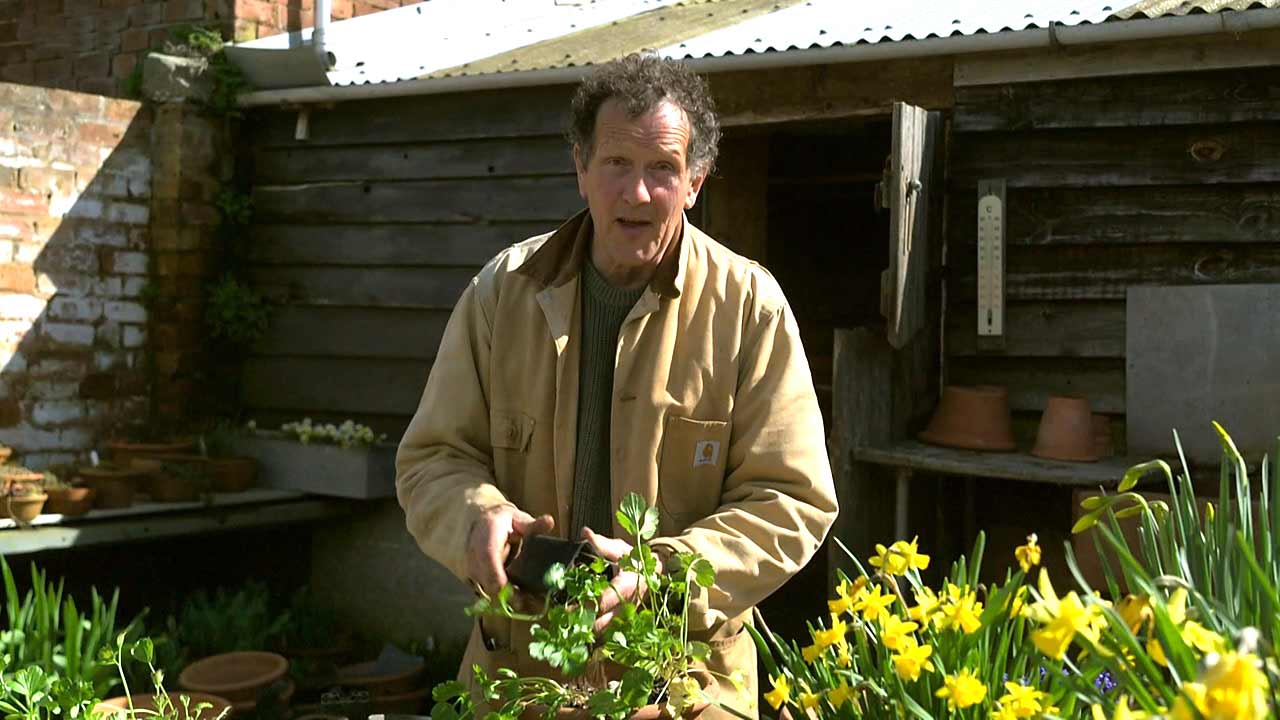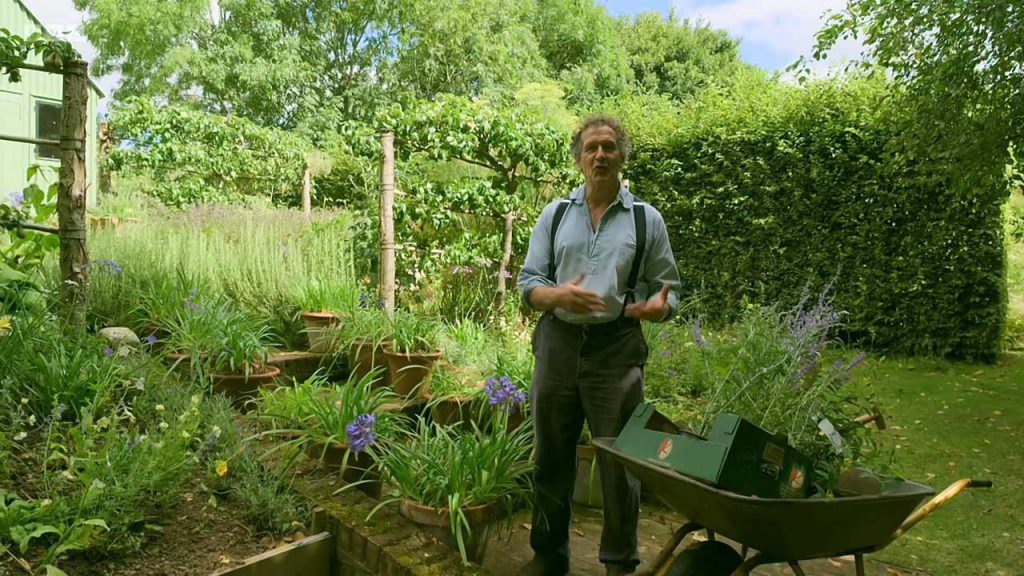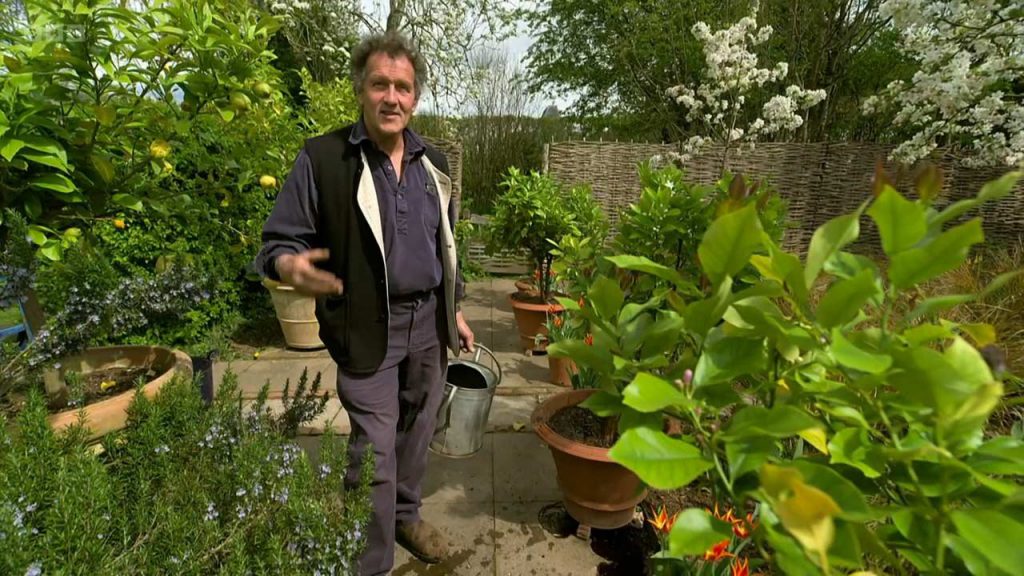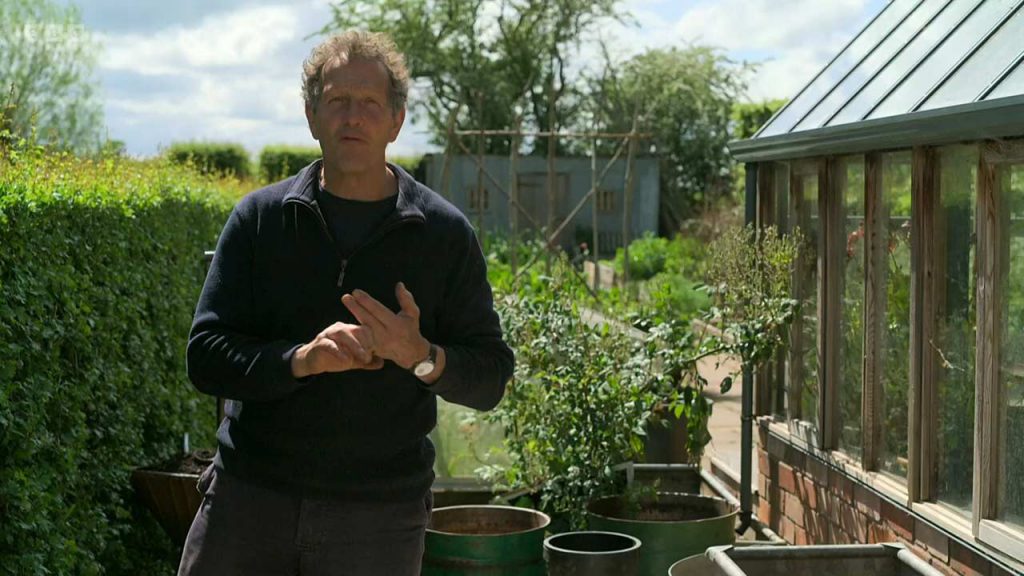Gardeners World 2023 episode 5: Monty prepares for late spring and summer, sowing poppies and planting cornflowers for colour and interest in the paradise garden. He also harvests rhubarb and shares tips on moving shrubs.
Toby Buckland revels in some fabulous spring planting on a visit to the magnificent landscaped gardens of Melbourne Hall in Derbyshire. Rachel de Thame meets a passionate dahlia grower who was once a florist working at the White House for the Obamas.
Gardeners’ World is a long-running British gardening programme that started on 5 January 1968. It was described as “a weekly series for gardeners, advanced and beginners, throughout the British Isles”. It picked up where its forerunner – Gardening Club – left off, and also featured that programme’s much loved presenter, the knowledgeable and down-to-earth Percy Thrower. The programme covers various aspects of gardening, such as plants, wildlife, design, techniques, tips and advice. It also features visits to gardens around the country and interviews with experts and enthusiasts.
The current main presenter is Monty Don, who hosts the show from his own garden in Herefordshire. He is joined by other regular presenters such as Carol Klein, Adam Frost, Arit Anderson, Frances Tophill and Nick Bailey. Gardeners’ World is a popular and influential programme that celebrates the joy of gardening and inspires people to create beautiful and productive gardens of their own.
Gardeners World 2023 episode 5
Growing rhubarb
Growing rhubarb is an easy and rewarding task for both experienced and novice gardeners in the UK. Rhubarb is a perennial plant, meaning it will come back year after year, producing edible stalks with a unique, tart flavour. Here are some essential tips for growing rhubarb in your garden:
- Choose the right variety: Select a rhubarb variety that is well-suited to the UK climate. Popular options include ‘Timperley Early’, ‘Victoria’, and ‘Raspberry Red’.
- Planting location: Rhubarb prefers a sunny or partially shaded spot in your garden with well-draining soil. Avoid waterlogged areas, as rhubarb does not tolerate standing water.
- Soil preparation: Before planting, incorporate plenty of organic matter, such as well-rotted manure or compost, into the soil to improve drainage and fertility.
- Planting rhubarb: The best time to plant rhubarb is during the dormant season, from November to early March. Purchase rhubarb crowns (the dormant root sections) from a reputable nursery or garden centre. Plant the crowns with the growing tip just above the soil surface, spacing them about 90-120cm apart.
- Watering: Keep the soil consistently moist, especially during dry spells. However, be careful not to overwater, as this can lead to root rot.
- Fertilising: Apply a balanced, slow-release fertiliser in the spring and top-dress the soil with well-rotted manure or compost in the autumn to promote healthy growth.
- Harvesting: Resist the temptation to harvest rhubarb during its first year, as the plant needs time to establish a strong root system. From the second year onwards, you can begin harvesting the stalks in spring when they are about 30-40cm long. Grasp the stalk at its base and gently twist and pull to remove it from the crown. Never harvest all the stalks at once; leave at least one-third to ensure the plant continues to grow.
- Pest and disease control: Rhubarb is generally low-maintenance, but watch out for common pests like slugs, snails, and aphids. Remove slugs and snails by hand or use organic controls. For aphids, try spraying the affected areas with a soapy water solution.
- Winter care: In late autumn, after the leaves have died back, remove any remaining stalks and apply a thick layer of mulch, such as well-rotted manure or compost, to protect the crowns from frost.
By following these tips, you’ll be well on your way to enjoying a bountiful rhubarb harvest for years to come.
The Ultimate Guide to Growing Ranunculus – Gardeners World 2023 episode 5
Ranunculus, also known as buttercups, are prized for their vibrant colours and intricate, ruffled petals. They make a stunning addition to any garden, and with our comprehensive guide, you’ll learn everything you need to know about cultivating these elegant blooms. Let’s dive in!
Choosing the Right Ranunculus Varieties
There are numerous varieties of ranunculus, each with its own unique characteristics. Popular choices include:
- Ranunculus asiaticus: Known for its large, double blooms in various colours.
- Ranunculus ficaria: Also known as lesser celandine, featuring small, star-shaped flowers.
- Ranunculus repens: The creeping buttercup, with its distinctively glossy leaves and golden-yellow flowers.
To choose the perfect variety for your garden, consider factors such as colour, bloom size, and growth habit.
Essential Growing Conditions
Soil and pH
Ranunculus plants thrive in well-draining soil with a pH level between 6.0 and 6.5. To improve drainage, incorporate organic matter, such as compost or aged manure, into the soil before planting.
Light and Temperature
Ranunculus plants prefer full sun, but they can tolerate light shade. They grow best in cool temperatures, with daytime highs between 10°C and 20°C.
Watering
Maintain consistent moisture levels for your ranunculus plants, watering deeply once or twice a week. Avoid over-watering, as this can lead to root rot.
Planting Ranunculus Tubers – Gardeners World 2023 episode 5
Ranunculus plants grow from tubers, which should be planted in autumn for spring blooms. Follow these steps for successful planting:
- Soak the tubers: Before planting, soak the tubers in water for 2-4 hours to rehydrate them.
- Prepare the planting area: Loosen the soil and add organic matter to improve drainage.
- Plant the tubers: Place the tubers with their “claws” facing downward, about 5 cm deep and 10-15 cm apart.
- Cover and water: Gently cover the tubers with soil, and water thoroughly.
Caring for Your Ranunculus Plants
Fertilising
To encourage healthy growth and abundant blooms, apply a balanced, slow-release fertiliser when planting the tubers, and again as the plants start to flower.
Pruning
Deadhead spent flowers to encourage more blooms and maintain the plant’s appearance. Cut back foliage after it has turned yellow and died back, usually in late summer.
Protecting from Pests and Diseases
Ranunculus plants can be susceptible to aphids and powdery mildew. To prevent these issues, maintain proper watering practices, ensure good air circulation, and apply insecticidal soap or fungicides when needed.
Propagating Ranunculus
Ranunculus plants can be propagated by division or seed:
- Division: After the foliage dies back, carefully lift the tubers and divide them into smaller clumps, replanting them in autumn.
- Seed: Collect seeds from the mature seed pods, and sow them in a seed tray or directly in the garden.
Enjoying Your Ranunculus Blooms
Ranunculus flowers make excellent cut flowers, lasting up to a week in a vase. To harvest, cut the stems at a 45-degree angle, and place them in water immediately.
Gardeners World 2023 episode 5




